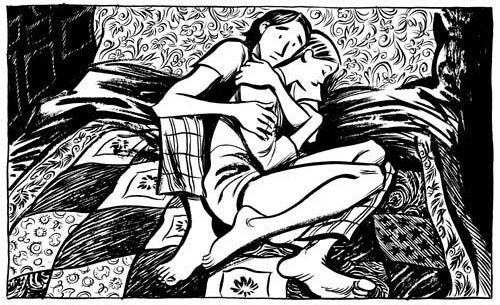This week in my expedition into the literature of comics lead me to what may some of the strangest and most offensive works of the graphic narrative I have ever read; Underground Comix. As a start to my evening, I watched Terry Zwillgof's 1994 movie Crumb. I also read selections of Zap comix, Mr Natural and Fabulous Furry Freak Brothers. I think I liked Zap Comix the most because I liked the varying types of work in it and some of the strange humor. Most of this week's selection was raunchy to a point of mild discomfort.
Most of Underground comix are highly sexual and rife with not only drug references, but actual drug use. Accompanying these themes, in one strip of Mr. Natural, Mr Natural receives fellatio from an adult sized baby in graphic detail...twice. Most of Crumb's most famous work is highly sexualized and gathers huge inspiration from psychedelics such as LSD. Crumb is also best known for his very objectified and large bodied women, who sometime don't even have heads to further their purpose as nothing but a sex toy. His wife said when asked about how she felt about this, that it is only really in his comics, and while he is very sexual, he doesn't have the same ideas in real life as he does in his comics
In Crumb, one of the subjects that comes up is Crumb's very racist depictions of black people, and he essentially said that he was just using the stereotypes without any hurtful meaning. In an interview, he goes on to say that he used the 1920s sterotypes in a psycadelicized way, and it wasn't meant to represent his view and that it wasn't his job to try to explain it to someone.
Crumb's drawing style is incredibly graphic and has very small but heavy use of lines, adding gruesome detail to everything he drew, sometimes using it to further the psychedelic drug feeling, and other times just to enhance his gross sexual illustrations.




